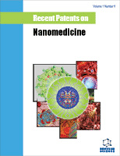Abstract
Drug delivery to the brain remains the major challenge for the treatment of all neurodegenerative diseases because of the numerous protective barriers surrounding the CNS (central nervous system). New therapeutics drugs that cross the BBB (blood brain barrier) are critically needed for treatment of many brain diseases. One of the significant facts on neuro-therapeutics is the constraint of the blood brain barrier and the drug release kinetics that cause peripheral serious side effects. Contrary to common belief, neurodegenerative and neurological diseases may be multisytemic in nature, and this presents numerous difficulties for their potential treatment. In recent years, gene therapy has evolved as a new treatment for brain diseases, especially for neurodegenerative diseases, where genetically engineered cells can be used to deliver specific growth factors to target cells. However, clinical troubles have limited this technique due to insufficient gene transfer, lack of prolonged gene expression or immunorejection of producer cells. One promising technology is the development of new biomaterial components with the capacity to envelope genetically engineered cells that produce and distribute the drug therapy, being at the same time, isolated from the immune system. This technology is known as cell microencapsulation, and represents a potential delivery system for specific proteins and growth factors to be transported to brain damage areas. Different producer cells may be encapsulated in alginate and be used to target certain phenotypic features and microenvironmental factors. The main goal is the capacity to release growth factors, peptides, proteins or hormones in a precise location, to holding the concentration in a physiological range into the brain and keep it isolated from immune system attacks.
Overall, the aim of this review is to summarize the last patents and news related to cell microencapsulation technology, demonstrate the potential of this technology for the development of novel neuro-therapeutics, and to enumerate the possible therapeutic applications in different brain diseases.
Keywords: Cell transplantation, microencapsulation, alginate, central nervous system, brain, neurodegenerative diseases, brain diseases, growth factors, drug delivery, therapeutics, Huntington disease, Alzheimer's disease, Parkinson's disease, neurofibrillary tangles, microcapsules, natural polymers, fibroblast growth factor, meningeal infiltration
 16
16

